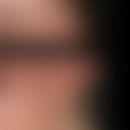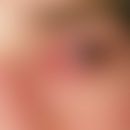Synonym(s)
HistoryThis section has been translated automatically.
DefinitionThis section has been translated automatically.
Benign, predominantly integumentary, less frequently systemic, self-healing, granulomatous disease of unclear etiology.
You might also be interested in
Occurrence/EpidemiologyThis section has been translated automatically.
Most common disease within the group of juvenile non-Langerhans cell histiocytoses.
Associations with peripheral neurofibromatosis (NF type I) or juvenile chronic myeloid leukemia have been described.
In up to 50% of patients with NF type I, a juvenile xanthogranuloma gfls. together with a N. anaemicus is found in addition to the typical café-au-lait spots (Ferrari F et al. 2014).
In 40-70% of patients, skin lesions appear already in the 1st year of life.
EtiopathogenesisThis section has been translated automatically.
ManifestationThis section has been translated automatically.
Predominantly begins within the first year of life (about 80% of cases)
Occurs in 5-17% of cases at birth.
Can (very rarely) occur in adulthood (20-30 years).
LocalizationThis section has been translated automatically.
ClinicThis section has been translated automatically.
Predominantly solitary, more rarely multilocular or disseminated, soft, elastic, initially red, later yellow or skin-colored, usually completely asymptomatic papules, plaques or nodules (usually 1-3 cm Ø) with a smooth or slightly wrinkled, scale-free surface. The isolated giant xanthogranuloma may grow larger than 5 cm.
JXG occurs with higher than average frequency (in about 3% of cases) together with type I neurofibromatosis (NF1) (Miraglia E et al. 2022).
HistologyThis section has been translated automatically.
Epidermis flattened, no epidermotropism. Dense infiltrates in papillary and reticular dermis consisting of histiocytes, foam cells, and giant Touton-type cells. Focal lymphohistiocytic infiltrates and neutrophilic and eosinophilic granulocytes. Infiltration of deeper tissues such as fascia and muscle common (30-40% of cases).
Immunohistology: Stabilin-1(MS-1/HMWP), CD68 positive multinucleated cells and CD163 positive histiocytes(S100, CD1a negative).
Differential diagnosisThis section has been translated automatically.
Tuberous xanthomas: adult onset.
Cutaneous mastocytoma: Analogous clinical picture. Darier's sign positive.
Urticaria pigmentosa xanthelasmoidea.
Langerhans cell histiocytosis (eosinophilic granuloma): mostly osteolytic bone lesions; skin rarely affected; histology is demonstrative.
Complication(s)(associated diseasesThis section has been translated automatically.
If neurofibromatosis generalisata type I is also present, the risk of developing juvenile chronic leukemia is 20-30 times higher.
TherapyThis section has been translated automatically.
Spontaneous regression possible between the ages of 1 and 6 years (40% of cases). Healing with residual pigmentation, on the capillitium possibly with alopecia.
Excision of single nodules if necessary, especially in case of disturbing localization (e.g. eye).
Alternative: treatment with CO 2 laser.
In case of rapid progression systemic glucocorticoids, e.g. prednisolone (e.g. Solu Decortin H) 10 mg/day p.o., especially in case of eye involvement to prevent glaucoma or loss of vision.
Progression/forecastThis section has been translated automatically.
LiteratureThis section has been translated automatically.
- Adamson NF (1905) Congenital xanthoma multiplex in a child. Br J Dermatol 17: 222-223
- Mc Donagh JER (1909) Spontaneous disappearance of an endothelioma (nevo-xanthoma). Br J Dermatol 21: 254-256
- Dehen L et al (1990) Xanthogranuloma, type I neurofibromatosis and myelomonocytic leukemia with spontaneous regression. Ann Dermatol Venereol 117: 812-814
- Dehner LP (2003) Juvenile xanthogranulomas in the first two decades of life: a clinicopathologic study of 174 cases with cutaneous and extracutaneous manifestations. Am J Surg Pathol 27: 579-593
- Ferrari F et al (2014) Juvenile xanthogranuloma and nevus anemicus in the diagnosis of neurofibromatosis type 1. JAMA Dermatol 150:42-46.
- Hügel H (2006) Fibrohistiocytic skin tumors. J Dtsch Dermatol Ges 4: 544-555.
- Jung T (2000) Congenital manifestations of juvenile xanthogranuloma (large nodular form). Dermatologist 51: 423-426
- Margulis A (2003) Juvenile xanthogranuloma invading the muscles in the head and neck: clinicopathological case report. Ann Plast Surg 50: 425-428.
- Miraglia E et al (2022) Juvenile xanthogranuloma in neurofibromatosis type 1. Prevalence and possible correlation with lymphoproliferative diseases: experience of a single center and review of the literature. Clin Ter 173:353-355.
- Müller P (1995) Juvenile xanthogranuloma. Z Hautkr 70: 73-74
- Torok E et al (1985) Juvenile xanthogranuloma: an analysis of 45 cases by clinical follow-up, light and electron microscopy. Acta Derm Venereol 65: 167-169
- Utikal J et al (2003) Cutaneous non-Langerhans' cell histiocytoses. J Dtsch Dermatol Ges 1: 471-491
- Wolff HH et al (1975) Juvenile xanthogranuloma and organ manifestations. Dermatol 26: 268-272
- Zvulunov A et al (1995) Juvenile xanthogranuloma, neurofibromatosis, and juvenile chronic myelogenous leukemia. World statistical analysis. Arch Dermatol 131: 904-908.
Incoming links (21)
Congenital self-healing reticulohistiocytosis; Cutaneous mastocytoma; Dermatofibroma; Dermatofibroma with monster cells; Giant cell granuloma, juveniles; Histiocytoses non-langerhans cell histiocytoses; Histiocytosis benign cephalic; Juvenile xanthogranuloma; Naevoxanthoendothelioma; Naevoxanthoma; ... Show allOutgoing links (20)
Café-au-lait stain; Cd163; Cd1a; Cd68; Co2 laser; Cutaneous mastocytoma; Darian sign; Excision; Glucocorticosteroids; Histiocytoses non-langerhans cell histiocytoses; ... Show allDisclaimer
Please ask your physician for a reliable diagnosis. This website is only meant as a reference.












